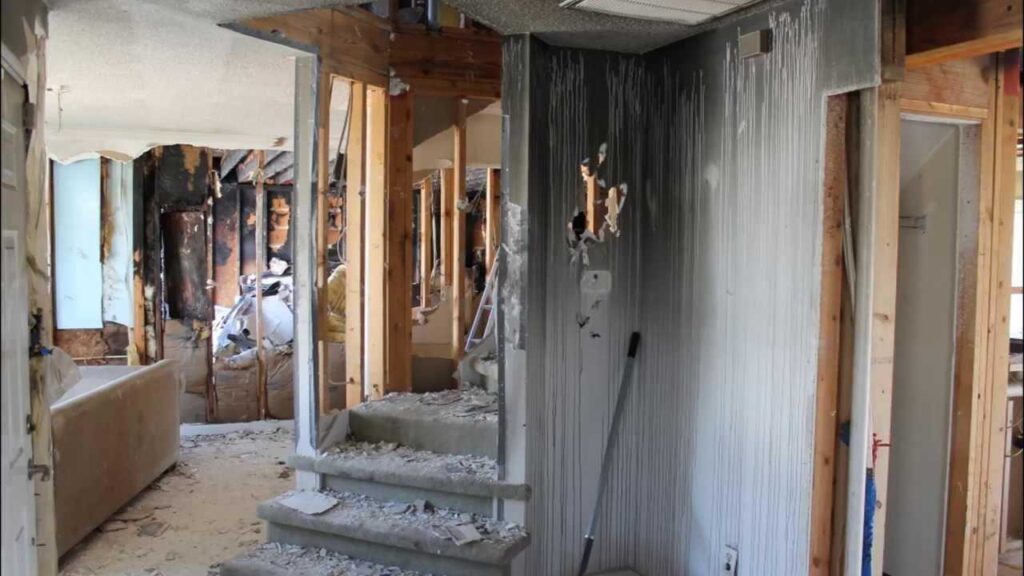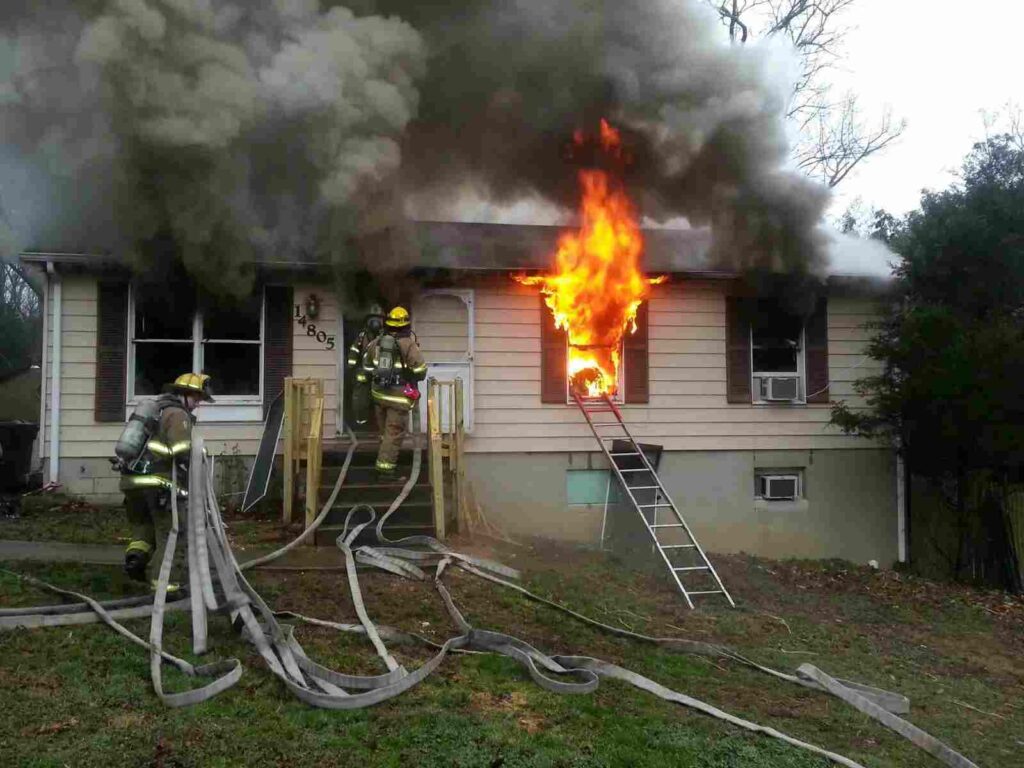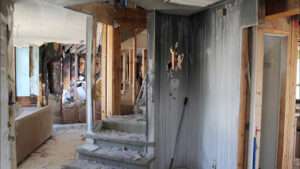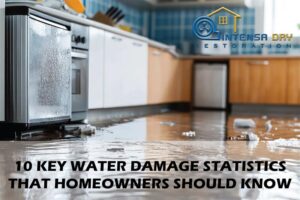Blogs
The Long-Term Effects of Fire Damage on Plano Properties

Fire incidents in Plano leave more than just immediate destruction; the lingering effects can profoundly impact properties and their occupants over time. While the visible signs of fire damage may be remedied, underlying structural issues, health risks, and environmental concerns can persist. From weakened infrastructure to mold growth and toxic residue, the hidden consequences of fire can make properties unsafe and reduce their value. Understanding the long-term effects of fire damage helps homeowners take proactive steps in restoration and maintenance, ensuring safety, health, and property longevity. In this article, Intensa Dry will explore these long-term impacts, addressing essential restoration practices to mitigate them and protect property value.
Structural Integrity Issues After Fire Damage:
Fire compromises a property’s structure, weakening foundational elements that may not be immediately visible. Heat can warp beams, weaken metal, and crack concrete, leaving structures vulnerable to collapse or instability over time. Even with repairs, compromised materials can create ongoing risks, particularly if the damage has reached load-bearing components. Regular inspections are essential to identify and address these hidden weaknesses, ensuring safe occupancy. Fire-damaged properties often need foundational reinforcements or replacements, particularly if there was extensive heat exposure. Ignoring these repairs can lead to more severe, costly issues down the line, making structural integrity a top priority in fire damage restoration for Plano properties.
Health Risks from Lingering Smoke and Soot:

Smoke and soot residue left behind after a fire pose serious health risks, particularly for respiratory health. These particles can settle into walls, carpets, and other materials, making them difficult to remove entirely. Even after cleaning, volatile organic compounds (VOCs) and microscopic soot particles can linger in the air, causing respiratory irritation, allergic reactions, and long-term respiratory conditions. In older properties, soot can penetrate deep into building materials, exacerbating exposure risks. For effective removal, specialized cleaning equipment and techniques are essential. Regular air quality testing and thorough cleaning treatments can mitigate these health hazards, ensuring a safer environment for those in fire-affected Plano properties.
Mold and Moisture Concerns Post-Fire :
Water used in firefighting efforts can introduce excess moisture into a property, creating ideal conditions for mold growth if not promptly addressed. Even if the property appears dry, hidden moisture can remain within walls, floors, and insulation, leading to mold growth that damages materials and poses health risks. Mold can cause respiratory issues, allergic reactions, and worsen asthma symptoms, particularly in fire-damaged structures. Effective moisture control and thorough drying procedures are crucial post-fire. Dehumidifiers, proper ventilation, and professional mold assessments help prevent hidden moisture-related problems, ensuring a safe environment. Addressing moisture issues quickly is vital to preserving the integrity of Plano properties affected by fire.
Electrical System Damage and Risks:
Fires can severely compromise electrical systems, making them unsafe for continued use without inspection and repair. The intense heat can melt wiring insulation, leading to potential electrical shorts, power fluctuations, or even new fire risks. Electrical components like outlets, switches, and breaker panels may be irreparably damaged, requiring replacement to prevent malfunctions. Ignoring electrical repairs can result in safety hazards and costly damage down the line. Regular electrical inspections and updates are essential in properties affected by fire, helping to prevent power issues and ensuring safe operation. Working with certified electricians ensures thorough restoration, maintaining both property value and occupant safety.
Long-Term Financial Implications of Fire Damage:
Fire damage restoration costs extend beyond immediate repairs, often impacting property values, insurance premiums, and resale potential. Properties with fire histories can face reduced marketability, as potential buyers may be wary of hidden damages or compromised structural elements. Additionally, homeowners may see increased insurance costs due to fire risks, particularly if full restoration measures aren’t taken. Maintaining thorough documentation of repair work and obtaining professional certifications for safety compliance can help mitigate these impacts. Investing in high-quality restoration services not only safeguards property but can also prevent future financial losses, ensuring Plano property owners maintain their investment’s value over time.
Psychological Impact of Living in Fire-Damaged Homes:

Experiencing a fire can have lasting psychological effects, particularly when the property bears visible or hidden signs of damage. The lingering fear of safety, memories of the traumatic event, and the discomfort of residing in a previously damaged environment can affect mental well-being. This stress may contribute to anxiety, insomnia, or even post-traumatic stress disorder (PTSD) in some individuals. Creating a fresh, safe environment through complete and thorough restoration can alleviate these psychological burdens. Mental health support, combined with quality restoration, provides peace of mind, helping occupants feel secure in their homes once more. Understanding the psychological impact highlights the importance of comprehensive fire damage recovery.
Environmental Effects of Fire-Damaged Properties:
Fire damage has far-reaching environmental consequences, impacting both local ecosystems and air quality. Burning materials release harmful chemicals into the environment, which can contaminate soil and water sources, posing risks to wildlife and vegetation. These environmental pollutants often remain around the property long after the fire, especially if cleanup processes are not exhaustive. Furthermore, rebuilding efforts generate construction waste, which contributes to landfill overflow. Environmentally conscious restoration practices, including eco-friendly cleaning and recycling materials, can help minimize these effects. Addressing environmental damage is crucial not only for property owners but also for the community’s long-term ecological health.
Property Value and Insurance Challenges:
Properties with fire histories face unique challenges in terms of valuation and insurance. Insurers may view fire-damaged properties as higher risk, leading to increased premiums or stricter policy terms. Property appraisers may also assess a lower market value for homes with extensive fire damage histories, affecting resale potential. Full transparency in restoration efforts, including detailed documentation, can help mitigate these issues by reassuring insurers and potential buyers of the property’s restored safety. Implementing high-quality, visible repair work and keeping certification records can alleviate concerns about property integrity. Taking these steps ensures that Plano property owners retain market value, even post-fire.
Preventive Measures for Future Fire Protection:
After fire damage, implementing preventive measures is essential to safeguard the property against future incidents. Installing updated fire alarms, sprinklers, and smoke detectors, along with routine maintenance, can enhance early detection and minimize fire risks. Educating residents on fire safety protocols, such as safe cooking practices and proper handling of flammable materials, is equally critical. Regular fire drills and emergency plans improve preparedness. Investing in high-quality, fire-resistant building materials during repairs also strengthens long-term protection. These steps collectively create a safer, more resilient environment for Plano properties, reducing both risk and anxiety for property owners and occupants.
Conclusion:
The long-term effects of fire damage on Plano properties go beyond visible destruction, affecting structural integrity, health, finances, and even mental well-being. Proactive restoration, regular inspections, and preventive measures can mitigate many of these risks, ensuring the property remains safe, stable, and valuable. Understanding these impacts allows homeowners to make informed decisions, investing in thorough recovery efforts that address both immediate and hidden issues. With the right approach, Plano property owners can restore safety, comfort, and peace of mind, protecting their homes and families from the lingering effects of fire damage. Comprehensive recovery is the key to preserving the future value and livability of fire-affected properties.
FAQs:
1. What are the most common hidden effects of fire damage on a property?
Fire damage can lead to several hidden issues, including weakened structural components, compromised electrical wiring, lingering smoke and soot particles, and mold growth due to water used during firefighting. These hidden problems may pose health and safety risks if not properly addressed during the restoration process.
2. How does fire damage affect indoor air quality?
After a fire, smoke and soot particles can infiltrate walls, carpets, and furniture, often lingering in the air even after cleaning. These particles can irritate the respiratory system and trigger allergies or asthma. Specialized cleaning methods, including air purifiers and HVAC cleaning, are necessary to restore healthy indoor air quality.
3. Can fire damage lower my property value?
Yes, fire damage can reduce property value, especially if there is a history of damage or incomplete restoration. Visible signs of damage or unresolved structural issues may discourage potential buyers. High-quality repairs, along with documentation showing full restoration and safety compliance, can help maintain or even restore property value.
4. How can I prevent mold after fire damage?
Since water from firefighting can cause moisture buildup, mold can be a concern post-fire. Using industrial dehumidifiers, proper ventilation, and thorough drying are essential steps. Professional mold inspections and cleaning can help prevent mold growth in areas like walls, insulation, and flooring where moisture may linger.
5. Will my insurance premiums increase after fire damage?
Insurance premiums may increase after a fire if the property is seen as higher risk. This depends on the insurance provider and the extent of damage. Completing comprehensive repairs and obtaining certifications for restored safety can sometimes help reduce premium increases.

